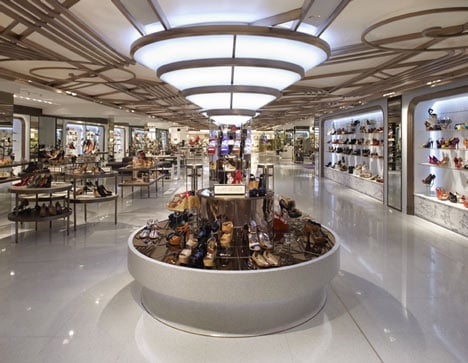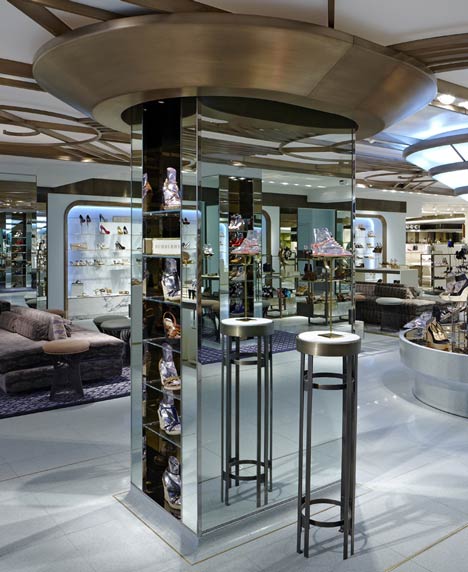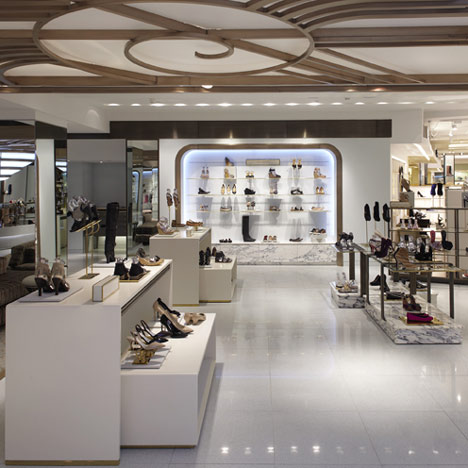An important movement that shaped today with its diverse characteristics is Art Deco. This movement was considered as both classical and symmetrical style which played an imperative role in the theatrical industry. Art deco which took place in 1952, had gained its inspiration from other movements such as cubism, futurism, and attributes from Bauhaus. Since Art Deco was discovered as ‘Art Moderne’ in Paris, during an exhibition, this movement dominated this style for seventeen years.
After Art Nouveau using whiplash curves and incorporating flora and fauna in architectural design, Art Deco was all about geometric forms that included repetitive pattern. The cause behind this was to cut down expensive decorations that were used in past movements into more modern ones that adorn products and architecture the same way as other movements did.
Since Art Deco was associated with luxury, it made use of many different vibrant colours such as shades of blue, greens, gold, browns, yellows, reds, and purples. These colours were used in fashion, architecture, interior and exterior of buildings during that era.
After Art Nouveau using whiplash curves and incorporating flora and fauna in architectural design, Art Deco was all about geometric forms that included repetitive pattern. The cause behind this was to cut down expensive decorations that were used in past movements into more modern ones that adorn products and architecture the same way as other movements did.
Since Art Deco was associated with luxury, it made use of many different vibrant colours such as shades of blue, greens, gold, browns, yellows, reds, and purples. These colours were used in fashion, architecture, interior and exterior of buildings during that era.
Without these masterminds, Art Deco would not have been conceived. Since this movement was produced in different products and architecture, there were various designers and architects.
· William Van Alen (Architect) – ‘Chrysler Building’ (1930)
· Ralph Thomas Walker (Architect)– ‘Time Square Building’, ‘The Barclays-Vesey Building’ etc.
· Eileen Gray (Product Designer)– ‘De Stijl table’, ‘Bindemdun chair’, ‘Tube light’ etc.
· Coco Chanel (Fashion Designer)
· Maurice Dufrene (Product Designer) – ‘Black Lacquer Club’,
For as much Art Deco was the new beginning after the decorative yet sophisticated design from the previous movement, it used different techniques and materials. This movement made use of artificial material to build and fabricated textiles which by then, textiles was already a vital industry due to high-end designers spawning. Architects, on the other hand, they created skyscrapers out of concrete, steel and aluminium, smooth-faced stone along with terracotta cladding. They also incorporated glass and vitrolite pigmented glass to enhance their design and patterns in interior and exterior.
https://www.pinterest.com/pin/468444798722674263/ [image]
One asks himself, what makes Art Deco movement unique from others?
Apart from having geometric buildings and repetitive patterns, this movement was all about simple design with the use of clean lines, streamlining shapes, motifs which included sunrise, chevron, neon lights (for signage and adverts), African and Egyptian inspirations. Regarding the exterior, using vertical towers, architects and designers integrated angular outlines, stepped piers, tapered pylons, pillars, and chrome, with a touch of curves there and then.
Apart from having geometric buildings and repetitive patterns, this movement was all about simple design with the use of clean lines, streamlining shapes, motifs which included sunrise, chevron, neon lights (for signage and adverts), African and Egyptian inspirations. Regarding the exterior, using vertical towers, architects and designers integrated angular outlines, stepped piers, tapered pylons, pillars, and chrome, with a touch of curves there and then.
https://www.pinterest.com/pin/491736853050613435/[image]
Architects and designers gave also importance to the:
- Roof – Constructions of high buildings with flat roofing adding along a chimney to intensify the creation
- Windows- incorporated glass blocks in both geometric and curved (depicting a liner) enhanced with embossed patterns
- Entrance – it was decorated with columns, door covered with adorn décor inserting high-quality materials.
These upgrades depend on the designers and on the project’s needs.
In the 21st century, many designers still use this style in their works. Famous retail shops such as ‘Harrods’ in 2011 designer Shed renovated the shows department into an art deco style. The Singaporean design company made use of curves lines on the ceiling, glass serving as a display holders to shoes also they integrated a chandelier to enhance their concept.
//www.dezeen.com/2011/03/01/harrods-shoe-salon-by-shed/ [images]
References:
'Harrods shoe salon by shed' written by Rose Etherington 2011 [information] https://www.dezeen.com/2011/03/01/harrods-shoe-salon-by-shed/ accessed on 15th May 2017 at 4.58pm
'8 influential Art Deco Sky Scrapers by Ralph ThomasWalker ' written by David Langdon 2015 [illustrations]http://www.archdaily.com/614156/8-influential-art-deco-skyscrapers-by-ralph-thomas-walker accessed on 15th May 2017 at 4.39pm
'Art Deco Style 1925-1940' written by Amelia and Mark M [information]https://www.wentworthstudio.com/historic-styles/art-deco/accessed on 15th May 2017 at 5.23pm
'5- Art Deco- The Architecture Tour' made by VisitBedFordCounrty, 2012 [information]https://www.youtube.com/watch?v=WPEfNQD56MM accessed on 15th May 2017 at 7.36pm







Comments
Post a Comment